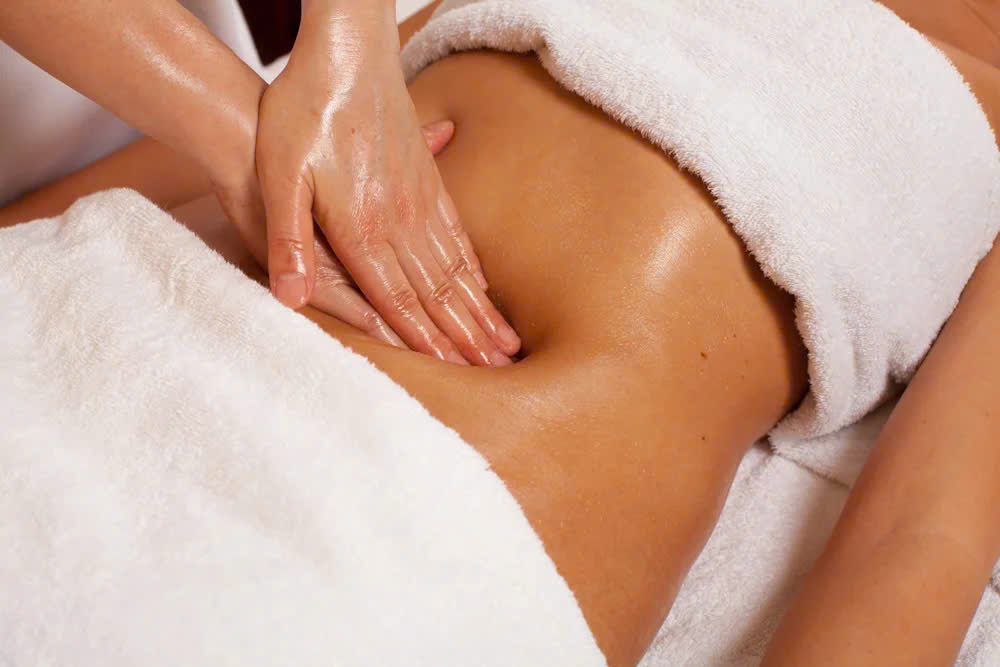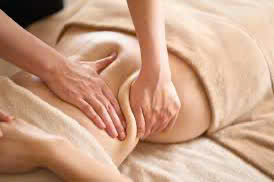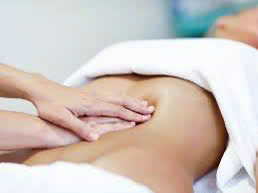Effective Slimming Massage Techniques for Fat Reduction
In the quest for a leaner, healthier body, many individuals turn to various methods to enhance their slimming journey. Among these, slimming massage has gained popularity due to its non-invasive nature and potential benefits in supporting fat reduction and body contouring. This technique involves specialized massage methods designed to stimulate lymphatic flow, improve circulation, and target stubborn fat deposits. When performed correctly and consistently, slimming massage can be an effective addition to your overall weight management strategy.
This comprehensive guide explores the most effective slimming massage techniques that promote fat reduction. Whether you’re considering professional sessions or self-massage at home, understanding these methods can help you optimize results and achieve a more toned physique.

Understanding the Principles of Slimming Massage
Before delving into specific techniques, it’s essential to grasp the fundamental principles that underpin slimming massage. This modality isn’t merely about kneading the skin; it’s a scientifically guided process tailored to enhance the body’s natural fat elimination mechanisms. A well-conducted massage can facilitate lymphatic drainage, improve blood flow, and stimulate the breakdown of fat cells.
In essence, slimming massage works on the premise of encouraging the body to eliminate toxins and excess fluids while also promoting the breakdown of stubborn fat deposits. It’s a holistic approach that combines physical manipulation with the body’s inherent detoxification processes. Therefore, understanding these principles helps you appreciate the importance of technique, pressure, and consistency in achieving meaningful results.
By integrating these foundational insights, practitioners and individuals alike can tailor their massage routines or professional treatments more effectively. When performed with proper knowledge and technique, slimming massage can serve as a catalyst for body transformation, complementing diet and exercise efforts.
The Role of Lymphatic Drainage in Fat Reduction
A critical component of slimming massage involves stimulating the lymphatic system, the body’s natural drainage network that filters toxins and excess fluids. When this system functions efficiently, it prevents fluid retention and supports the reduction of swelling and bloating, which can make the body appear slimmer.
Effective lymphatic drainage through massage can also facilitate the removal of fat metabolites from tissues, helping to refine body contours over time. Techniques such as gentle kneading, rhythmic tapping, and targeted pressure can activate lymph nodes and promote fluid movement.
Despite its subtlety, lymphatic stimulation profoundly impacts overall slimming efforts by enhancing nutrient transportation and waste elimination. It’s an essential aspect of any serious slimming massage protocol, as it enhances the body’s capacity to process and eliminate unwanted substances, resulting in a more toned appearance. Regular sessions can lead to long-term improvements by supporting metabolic function and reducing fluid-related weight.
Improving Circulation for Better Fat Metabolism
Another cornerstone of effective slimming massage lies in boosting blood circulation. Good circulation ensures that oxygen and nutrients are delivered efficiently to tissues while waste products are carried away for elimination. When massaged and stimulated correctly, the body’s circulatory system can become more efficient at breaking down fats and helping the body metabolize stored energy.
Massages that focus on increasing blood flow often incorporate techniques like scraping, tapping, and kneading, which gently stimulate blood vessels and enhance overall circulation. This process helps to warm and loosen tissues, making fat cells more receptive to breakdown. Additionally, improved circulation accelerates the delivery of enzymes and hormones involved in fat metabolism, creating a synergistic effect.
Optimizing circulation through massage not only aids in fat reduction but also promotes skin elasticity and firmness. Consequently, the skin becomes more resilient and youthful, reducing sagging and enhancing the body’s natural contour. Incorporating circulation-enhancing techniques into your slimming massage routine offers a holistic approach to reducing fat while maintaining skin health.
Key Massage Techniques for Fat Reduction
With a clear understanding of the principles behind slimming massage, implementing effective techniques becomes more straightforward. These methods leverage specific movements and pressures aimed at optimizing fat breakdown and lymphatic flow. Proper execution of these techniques enhances results, whether in professional spa settings or at home.
The following techniques are among the most effective and widely practiced methods in the realm of slimming massage. Adapted skillfully, they can help you target localized fat deposits and improve the overall appearance of your body.

Manual Lymphatic Drainage Massage Techniques
Manual lymphatic drainage (MLD) is a gentle, rhythmic massage technique specifically designed to stimulate the lymphatic system’s function. It involves light, circular, and pump-like movements that direct lymph toward lymph nodes, promoting detoxification and reducing fluid retention.
When executed effectively, MLD can significantly reduce swelling and improve the skin’s natural tone, making it an excellent foundation for slimming massage routines. The key to success lies in understanding the directionality of lymph flow—massaging from extremities toward central nodes and avoiding excessive pressure that might hinder lymph movement.
Practitioners often use their fingertips around lymphatic pathways like the neck, collarbone, armpits, and groin. These areas contain major lymph nodes that serve as drainage points for the entire body. Regularly performing MLD can lead to measurable improvements not only in body shape but also in skin texture and overall health.
For individuals performing self-massage, gentle circular motions along these pathways, combined with deep breathing, enhance lymphatic activation. Patience and consistency are essential, as results accumulate over time through routine practice.
Deep Tissue Massage for Targeted Fat Reduction
Deep tissue massage involves applying firm pressure and slow strokes to reach deeper layers of muscles and tissues. This technique is particularly effective for breaking down fibrous fat deposits and improving tissue elasticity.
A skilled practitioner manipulates tissues around stubborn fat areas such as the abdomen, thighs, and hips, encouraging the breakdown of fat cells and promoting circulation. The mechanical action of deep massage can also stimulate the production of collagen and elastin fibers, enhancing skin firmness.
The efficacy of this massage depends on proper pressure application and technique. It’s crucial to avoid excessive force that could cause discomfort or injury. When done correctly, deep tissue massage can accelerate fat metabolism, especially when combined with targeted exercises and dietary modifications.
Individuals should consider this technique as part of a comprehensive fat reduction plan. Regular sessions can yield visible improvements in body contours, especially when complemented with other healthy lifestyle practices.

Lipo-Lymphatic Massage Techniques
Lipo-lymphatic massage is a specialized approach that combines elements of lymphatic drainage and soft tissue manipulation to target localized fat deposits. It often involves gentle, rhythmic movements similar to MLD but with an emphasis on breaking down fat clusters.
Practitioners typically perform this technique with specific tools such as cupping cups or massage rollers to intensify effects. The massage movements focus on mobilizing fat cells and encouraging their breakdown, while also stimulating lymph flow to accelerate toxin removal.
A significant advantage of lipo-lymphatic massage is its capacity to subtly reshape body contours by actively reducing cellulite and fat bulges. It’s particularly effective in areas resistant to diet and exercise, making it appealing for those with stubborn deposits.
Self-practice can incorporate gentle rolling or tapping motions on problem areas, but professional guidance ensures optimal technique and safety. Consistency, combined with lifestyle changes, enhances the effectiveness of this targeted massage approach for fat reduction.
Combining Massage with Lifestyle Modifications
While massage techniques are powerful, they work best when integrated into a broader health and wellness regime. Slimming massage can be a catalyst for change, but without supportive diet and exercise, results may be limited. The synergy of massage, proper nutrition, and physical activity creates a comprehensive approach for optimal fat reduction.
It’s advisable to adopt a balanced diet that emphasizes whole foods, lean proteins, healthy fats, and ample hydration. Nutritional choices directly influence the body’s ability to burn fat and recover from massage treatments. Furthermore, regular cardiovascular and strength training exercises complement massage-induced fat breakdown by stimulating metabolic activity.
Incorporating consistent physical activity enhances lymphatic flow and circulation, amplifying the benefits of slimming massage. Lifestyle habits such as avoiding excessive alcohol or processed foods, getting adequate sleep, and managing stress also contribute to overall slimming success. When these elements are aligned, massage becomes a potent tool for achieving and maintaining your ideal body shape.

Conclusion
Effective slimming massage techniques encompass a blend of principles that stimulate lymphatic flow, improve circulation, and target stubborn fat deposits. From manual lymphatic drainage to deep tissue and lipo-lymphatic procedures, each method offers unique advantages tailored to different needs. When practiced regularly and combined with healthy lifestyle choices, these massage techniques can serve as a valuable adjunct in your slimming journey. The key lies in understanding the principles, executing techniques with precision, and maintaining consistency. As part of a holistic approach, slimming massage empowers you to take active steps towards your body contouring goals, promoting not just appearance but overall well-being.
Conclusion
In conclusion, slimming massage combines scientifically grounded techniques such as lymphatic drainage, deep tissue manipulation, and targeted stimulation to support fat reduction and body contouring. When applied correctly, these methods enhance metabolism, eliminate toxins, and help break down stubborn fat deposits, especially when integrated into a healthy lifestyle that includes mindful nutrition and regular exercise. This holistic approach ensures sustainable results and promotes overall health, making slimming massage a valuable component of any comprehensive weight management plan. Consistent practice, professional guidance, and a commitment to wellness are essential for unlocking the full potential of these effective techniques.
Understanding Lymphatic Drainage for Slimming
Lymphatic drainage is a vital aspect of the human body’s detoxification and immune processes. This natural and gentle technique involves stimulating the lymphatic system to encourage the removal of waste and toxins from the body, which can aid in many health-related goals, including slimming. A solid comprehension of how the lymphatic system functions and how lymphatic drainage techniques are applied can significantly enhance the effectiveness of any body contouring regimen.
The Anatomy of the Lymphatic System
The lymphatic system comprises a network of vessels, nodes, and organs that work in tandem to transport lymph—a fluid that contains white blood cells, proteins, and other nutrients—throughout the body. This system helps to maintain fluid balance, absorb fats from the digestive tract, and defend against infections.
When the lymphatic system is functioning optimally, waste and toxins are effectively filtered out, contributing to overall wellness. However, factors such as sedentary lifestyles, poor dietary choices, or stress can impede lymphatic flow, leading to fluid retention and an increase in body circumference. Understanding this system’s anatomy is essential for mastering lymphatic drainage techniques that can effectively promote slimming.
Techniques to Activate Lymphatic Flow
Manual lymphatic drainage (MLD) is a gentle form of massage characterized by light, rhythmic, and pump-like movements. The practitioner aims to direct lymph towards lymph nodes, which act as detoxification centers within the body. These lymph nodes are strategically located in areas such as the neck, armpits, abdomen, and groin, making them essential targets for effective lymph drainage.
Individuals can also perform self-MLD using gentle circular motions along lymphatic pathways. Techniques should focus on the areas that impact fluid retention, with a particular emphasis on working toward central nodes. Incorporating deep breathing exercises can further enhance technique effectiveness, as this encourages the movement of lymph fluid and diminishes tension in the body.
Benefits of Enhanced Lymphatic Flow
Stimulating lymphatic flow through drainage techniques can lead to remarkable benefits, from reduced swelling to improved skin tone. This process not only supports detoxification but also enhances overall wellness by boosting immune response and energy levels. Regularly incorporating lymphatic drainage can build a strong foundation for any slimming massage routine, making it an effective tool for those looking to sculpt their bodies.
Individuals who practice these techniques regularly often report measurable improvements in body shape and texture. Furthermore, when combined with other healthy lifestyle modifications—like a balanced diet and regular exercise—these benefits can be amplified, contributing to a healthier and more vibrant appearance.
Exploring Deep Tissue Massage Techniques
Deep tissue massage is a powerful technique that focuses on the deeper layers of muscles and connective tissue. Unlike traditional massages that typically target surface-level relaxation, deep tissue massage aims for structural issues underneath, making it an essential component of effective Slimming Massage practices.
The Mechanics of Deep Tissue Massage
When performed correctly, deep tissue massage utilizes slow strokes and deep pressure to release muscle tension and break down fibrous tissue. This technique is especially beneficial for people with stubborn fat deposits around their abdomen, thighs, and hips, where fat accumulation is often resistant to diet and exercise.
The mechanical force applied during a deep tissue session promotes increased blood circulation and lymphatic drainage, ultimately enhancing metabolism. Moreover, this technique can stimulate the production of collagen and elastin, crucial for maintaining skin firmness and elasticity, thus providing even more benefits to individuals focused on slimming.
Understanding the Importance of Pressure Application
Proper pressure application is vital in deep tissue massage. It’s essential to communicate with your massage practitioner to ensure that the pressure is strong enough to be effective without causing discomfort or pain. Each individual’s tolerance for pressure varies, and experiences can differ drastically from one person to another.
A skilled deep tissue massage practitioner knows how to gauge the body’s responses while maintaining optimal pressure to achieve the desired therapeutic outcomes. When combined with other healthy lifestyle habits, deep tissue sessions can significantly accelerate fat metabolism and contribute to sculpting body contours.
Integrating Deep Tissue with Lifestyle Changes
The effectiveness of deep tissue massage can be drastically improved by incorporating lifestyle changes alongside massage treatments. Engaging in regular physical activity, particularly strength training and cardiovascular exercise, complements the fat mobilizing effects of deep tissue techniques. Additionally, a well-balanced diet rich in fruits, vegetables, and healthy fats optimizes the body’s ability to use these enhanced metabolic rates efficiently.
Individuals can also benefit from practical changes like keeping well-hydrated and managing stress levels, which can further improve muscle recovery and overall health. Thus, combining a tailored regimen of deep tissue massage with supportive lifestyle habits can dramatically enhance the journey toward effective slimming.
Efficacy of Lipo-Lymphatic Massage Techniques
Lipo-lymphatic massage is a specialized form of massage therapy that merges strategies from lymphatic drainage and tissue manipulation to precisely address areas of localized fat deposits. This unique method captures the essence of modern wellness techniques, seeking not only cosmetic improvements but also promoting health and vitality.
The Art of Lipo-Lymphatic Massage
Lipo-lymphatic massage employs gentle and rhythmic movements to dissolve fat cells and improve lymphatic flow, making it an effective choice for individuals facing stubborn areas of fat. The incorporation of specific tools such as cupping cups or massage rollers amplifies the effects of this technique, enabling better penetration and manipulation of tissues.
By targeting problem areas, lipo-lymphatic massage helps reshape body contours and minimize the appearance of cellulite, promoting a smoother skin texture. When applied consistently, this technique can yield noticeable changes in body shape, helping individuals reach their slimming goals effectively.
Advantages of Combined Techniques
One of the key advantages of lipo-lymphatic massage is its dual-focus approach. While traditional massage generally aims at relaxation or muscle relief, lipo-lymphatic specifically targets body shaping and detoxifying. This means individuals can experience both spa-like relaxation and substantial body contouring advancements in one treatment session.
Moreover, lipo-lymphatic massage can have a cumulative effect when performed alongside lymphatic drainage and deep tissue techniques. This three-pronged approach not only supports enhanced detoxification but also helps break down fat deposits, resulting in remarkable improvements in body shape and skin quality.
Self-Practice Techniques for Optimal Benefits
For those who wish to engage in self-massage, adopting gentle rolling or tapping motions can mimic the techniques of lipo-lymphatic massage, focusing on areas of stubborn fat. However, professional guidance remains invaluable, as they provide insight into optimal techniques and safety. Regular practice can facilitate improved tissue elasticity, lymphatic flow, and ultimately, contribute to the effectiveness of any comprehensive fat reduction strategy.
By integrating these approaches into a holistic regimen that encompasses healthy diet and lifestyle decisions, individuals can achieve their desired outcomes effectively while promoting overall well-being.https://www.google.com/knowledgegraphshares?sca_esv=41514daaec8f90aa&hl=vi&gl=vn&output=search&kgmid=/g/11ld8cgf50&q=Citymax+spa-+thai+massage-massage+home+service+bur+Dubai&shndl=30&shem=lspt11&source=sh/x/loc/act/m1/5&kgs
Conclusion
In summary, effective slimming massage techniques, including lymphatic drainage, deep tissue manipulation, and lipo-lymphatic applications, are pivotal in promoting body contouring and detoxification. Each methodology contributes to a collective objective of enhancing metabolic function, fluid balance, and cellular health, empowering individuals on their journey toward shaping their physique. By embedding these massage techniques within the framework of a supportive lifestyle that encompasses nutritious eating and regular physical activity, individuals can harness the full benefits of slimming massage as a robust tool for achieving their health and wellness aspirations. Consistency, informed practice, and a holistic approach are fundamental in unlocking sustainable results.https://jobedubaispa.com/traditional-massage/
